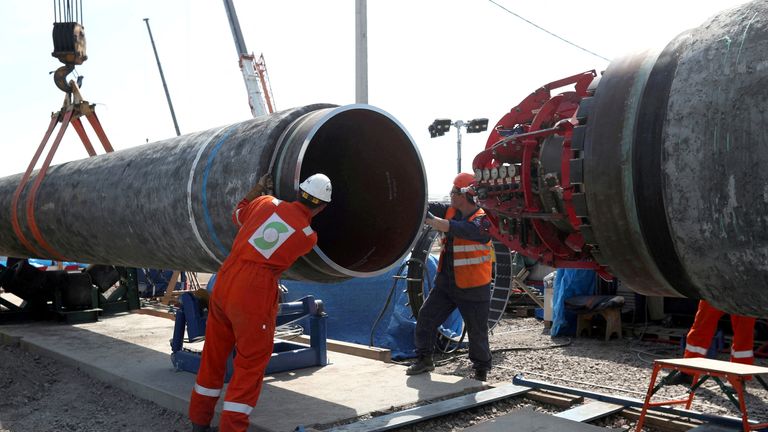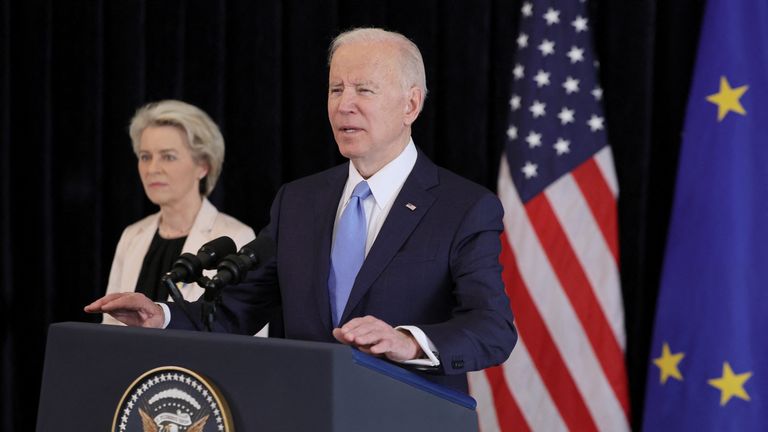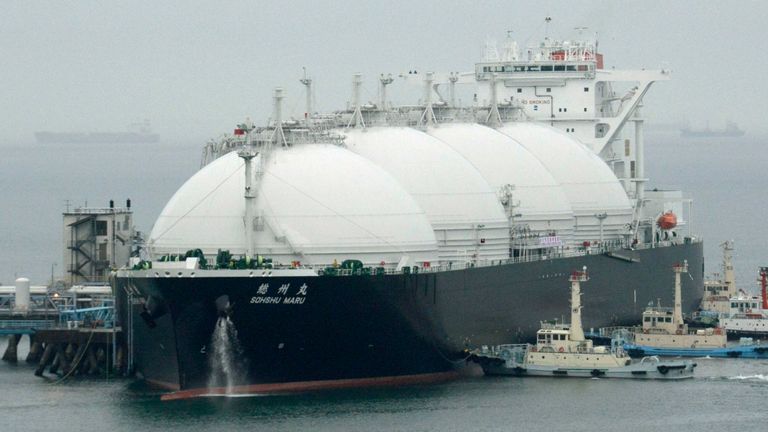Will US-EU gas deal crack open door to greater transatlantic supply?
The deal agreed by the United States to supply more liquefied natural gas (LNG) to the European Union goes a little way further to hampering Vladimir Putin’s war effort.
As is well known by now, Russia supplies the EU with 40% of its gas and 30% of its oil, with some individual countries, such as Finland, even more dependent on Russia.
That makes the need to move all the more urgent.
Today’s deal, under which the US will seek to provide the EU with at least an extra 15 billion cubic metres of LNG this year, is a step in the right direction. The US was already committed to shipping some 22 billion cubic metres to the EU this year.
But it is only going to go so far. The optics of this announcement are far more encouraging than the actual detail underpinning it.
The EU’s total gas imports from Russia last year came to 155 billion cubic metres, the vast majority of it via pipelines, with just 15 billion cubic metres coming in the form of LNG.
In other words, the extra gas supplied to the EU this year will only be enough to replace the small portion of Russian gas that the EU imports each year in the form of LNG.
The US is targeting LNG exports to Europe of 50 billion cubic metres by 2030 but, even then, that would only amount to just under a third of the EU’s current gas imports from Russia.
The bloc is clearly going to have to step up its efforts in diversifying its energy sources. Renewables are likely to play the key role here but Germany has indicated it may overturn its easing out of nuclear power and is likely to rely on coal to an extent. Italy, the EU’s second largest importer of Russian gas, has indicated it may have to reopen some coal-fired power plants in the short term.
There is, though, another major problem. The EU has only a limited number of LNG terminals capable of receiving the energy.
Many EU countries, most notably Germany, do not have the terminals required to receive LNG cargoes. Olaf Scholz, the German chancellor, confirmed on Thursday this week that Germany will begin construction of two new LNG terminals later this year but, in the meantime, the lack of terminals will limit the country’s ability to receive gas in this way.
Germany’s new terminals are thought unlikely to be ready to receive cargoes much before 2026.
The EU country with the biggest number of LNG terminals is Spain, which has six, but unfortunately it is not in a position to get gas to other EU countries quickly because its connections to the rest of Europe are poor – with just the one pipeline to France.
LNG terminal capacity is weakest in those countries in eastern Europe which again depend heavily on Russian gas. The UK has three operational LNG terminals – Dragon and South Hook, at Milford Haven in Pembrokeshire and the Isle of Grain in Kent, plus a fourth at Teeside, which is currently mothballed.
So the EU’s problem is not only that it is dependent on Russian gas. It is that it has grown dependent on receiving that gas via pipelines rather than LNG.
Either way, even if new LNG terminals can be built, the EU is going to end up paying more for its energy.
LNG costs more than gas delivered via pipelines because of the time and expense involved in liquefying it, transporting it and then regasifying it.
A further question raised by this announcement is where the gas is going to come from. US natural gas production is already running at close to maximum capacity and, in addition, the US has buyers already for most of the LNG it was due to export this year.
So, in the very near term, at least some of the extra 15 billion cubic metres of LNG that the US has promised Europe this year is going to have to come from cargoes it has already promised other buyers.
Diverting or reallocating LNG cargoes may actually suit the US because European gas prices are among the highest in the world and it will make more money selling to the EU than to buyers elsewhere.
To sum up then, while this is a positive development, it is not on its own going to be enough to help the EU cut its dependence on Russian gas in the very short term.
It would be no surprise to see EU countries seeking to strike more deals with other major LNG suppliers, including Australia, Algeria and Qatar of the sort that Germany struck with the latter earlier this week.
It may also reopen the debate in the UK about fracking. Much of the LNG exported by the US has been produced in this way and there may be an opportunity for the UK, if it chooses, to do the same to help meet demand from elsewhere in Europe.





